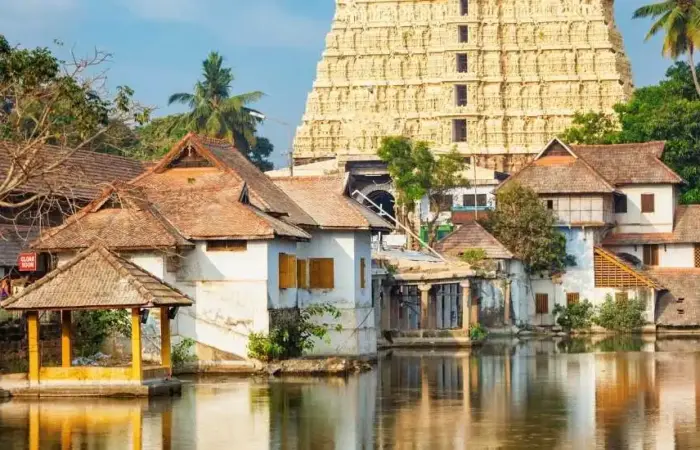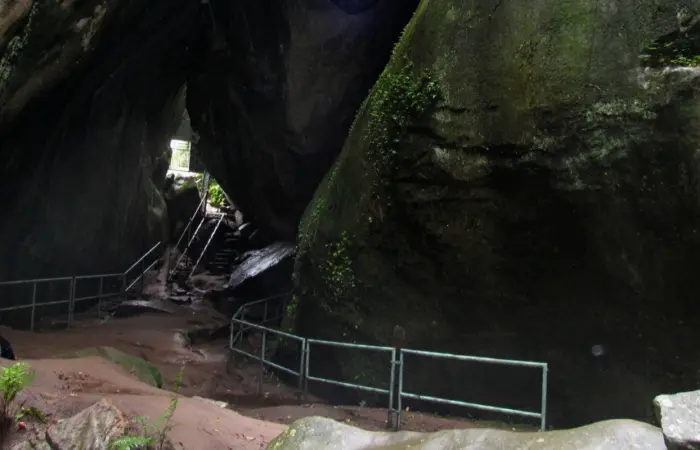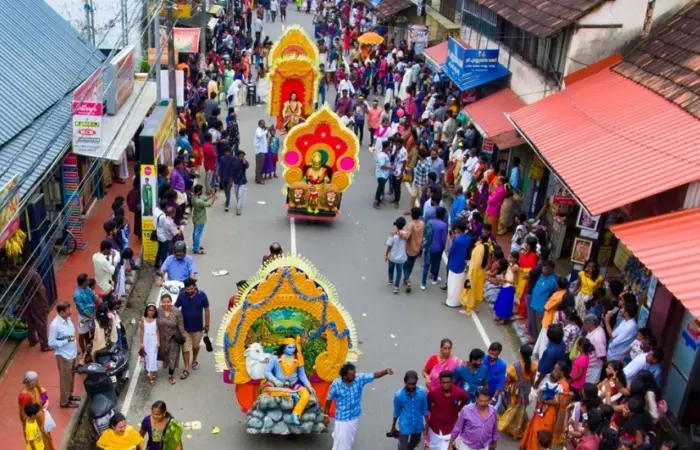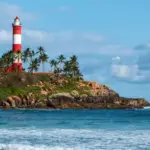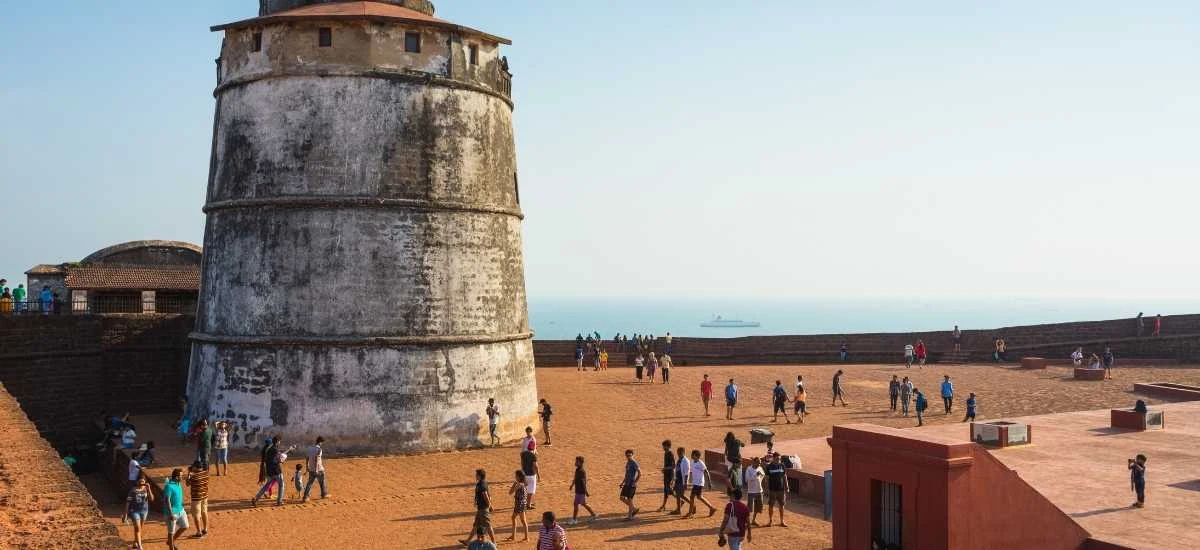
Forts are the enduring symbols of history that bear witness to a region’s past. Kerala has the best collection of amazing and impressive Forts that tell tales of antiquity and reflect brilliant architecture. When some were built to guard the state against enemies in warfare, others served as a centre of social and political activities, and some just for the pleasure of kings. These magnificent Forts in Kerala are sure to entice you with their eventful histories and legendary stories.
If you are planning a trip to Kerala, then visiting these historical forts should be on your list. Read on to find the Most Popular Forts in Kerala.
Fort Emmanuel
Fort Emmanuel, AKA Immanuel Fort, built by the Portuguese in 1503, is among the first European Forts in India. Located in Fort Kochi, it was formerly a symbol of the strategic alliance between the Maharaja of Kochi and the Monarch of Portugal, after whom it was named.
Even in ruins, Fort Emmanuel reflects vestiges of Portuguese royalty and the architectural finesse of that time. The Dutch captured Fort Emmanuel from the Portuguese in 1663. The fort was under Dutch authority until 1795, when the British overthrew the Dutch and assumed control.
Pallipuram Fort
Pallipuram Fort, situated on Vypeen Island near Kochi, is the oldest existing European fort in India today. It was also built in the year 1503 by the Portuguese. Locally known as Ayikotta or Alikotta, Pallipuram Fort is a massive hexagonal structure that still stands tall, preserving vestiges of European heritage.
The majestic Fort fell into the arms of the Dutch in 1663. Later in 1798, the Travancore Maharaja purchased the fort, and it is now a protected monument under the care of the Kerala State Department of Archaeology.
Bekal Fort
Bekal Fort is the most popular fort in Kerala. At Bekal, in Kasaragod district, on the shores of the mighty Arabian Sea, lies the massive, 3000-year-old, keyhole-shaped Bekal Fort. Sprawling over 40 acres, it is lauded as the largest fort in the state.
This fabulous Fort was built in 1650 CE by Shivappa Nayaka of Keladi and was the chief military station for Tipu Sultan when he led a military expedition to capture Malabar. The fort houses no palaces or mansions as it was never an administrative centre. Visit Bekal Fort to admire its unique architecture and soak in the mesmerising beauty of its idyllic setting.
Palakkad Fort
Well-known as Tipu’s Fort, Palakkad Fort is one of the best-preserved forts in Kerala. Built by Hyder Ali in the 18th century, the stunning fort still stands proudly as a citadel of the valour and courage of Tipu Sultan, the great ruler of the Kingdom of Mysore. Later, the Fort fell into the hands of the British, who renovated it in 1790. Archaeological Survey of India (ASI). Amid a picturesquely landscaped arena with a labyrinth of lush green forests and crisscrossing cascading rivers, lies the grand and majestic square-shaped Palakkad Fort, attracting tourists from all corners of the country.
Thalassery Fort
Thalassery Fort, also called Tellicherry Fort, established by the East India Company, is a formidable historical fort which stands as a testament to colonial rule in Kerala. Thalassery Fort at Kannur was built with the aim of establishing a stronghold on the Malabar Coast, but initially served as a godown for pepper and cardamom. And eventually, the Fort became a strategic centre for the military activities of the British and is now looked after by the Archaeological Survey of India.
This stunning square-shaped fort is an excellent masterpiece of the architectural style of yesteryears. The artistically carved massive doors and walls, indestructible flanking bastions, the lighthouse pronouncing it a harbour town, and the secret tunnels to the sea are some of the notable features of Thalassery Fort.
St Angelo Fort
Stands proudly on the Arabian Sea coast, St. Angelo Fort, locally known as Kannur Kota (Kannur Fort) is one of the most popular and picturesque forts in Kerala. It was built in the year 1505 by the first Portuguese Viceroy of India, Dom Francisco de Almeida, with the consent of the ruling Kolathiri Raja.
St. Angelo Fort was taken over by the British late in 1790 and turned into the main army centre in the Malabar region. But now, it is preserved by the Archaeological Survey of India. St. Angelo Fort is triangular in shape and is guarded by huge bastions and a moat. This enduring historical Fort also houses the remains of an old oil lamp lighthouse, which is said to be the first lighthouse in Kannur. Besides the gripping history and intriguing tales, the Fort also offers an excellent view of Mappila Bay, a natural fishing harbour and the picturesque Dharmadam Island.
Chandragiri Fort
A popular fort in Kerala, Chandragiri Fort near Bekal in Kasaragod, is of great historical and artistic significance. The historic Fort lies atop a hill near the confluence of the Payaswini River and the Arabian Sea. It was built by Sivappa Naik of Bedanore in the 17th century.
The Chandragiri Fort is now protected by the State Archaeology Department. It was once a powerful stronghold of the Naik dynasty, and now only a remnant of its original majestic form remains. Chandragiri Fort is square-shaped, and the charming location with the gorgeous view of the confluence of the river and sea adds to the beauty of the Fort.
Anjengo Fort
Anjengo Fort or Anjuthengu Fort is situated near Anjuthengu in Varkala. It was built by the British East India Company between the 17th to 18th centuries. The Anjengo Fort was the first signalling station for ships arriving from England and still stands as a witness to many historic events related to colonial rule in the region.
The Anjengo Fort was used as a storehouse for armaments and ammunition during the Anglo-Mysore War. The 130-foot-tall lighthouse near the fort is a major crowd-puller and offers picturesque panoramic views of the surroundings. The Anjengo Fort is now preserved by the Government as a monument of the colonial past.
St Thomas Fort
St. Thomas Fort, popularly known as Thangasseri Fort, is a ruined fort located in the sleepy little beach town of Thangasseri in Kollam. Though in ruins, the Fort speaks of a glorious past. The rustic appearance of the Fort with its lush green surroundings makes for a stunning setting for photography.
Currently, the Fort is preserved by the Archaeological Survey of India (ASI). St. Thomas Fort has a rich trade history and culture, and was built in 1519 CE by the Portuguese. The fort was captured by the Dutch in 1658. Although the Portuguese regained control of some of the regions of the Fort, the Dutch took back the fort in 1661. And finally, in 1795, the Dutch gave over control of the Thangasseri Fort to the British.


